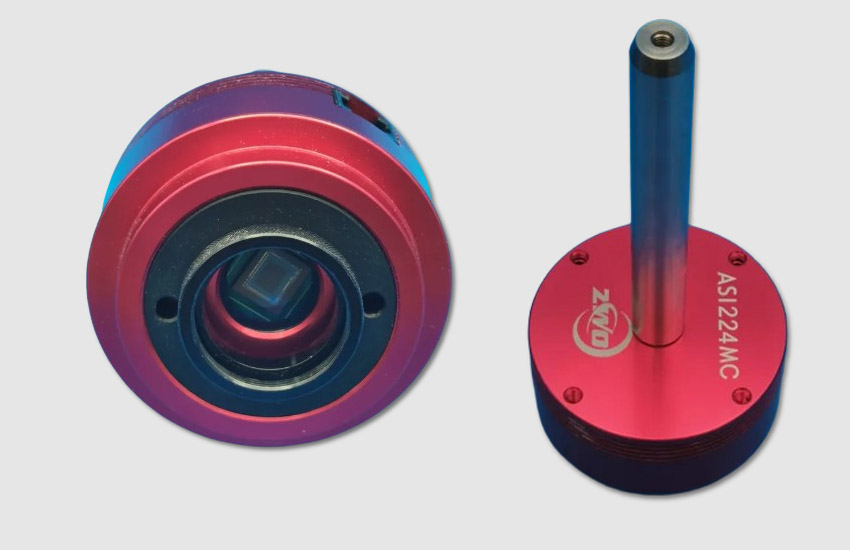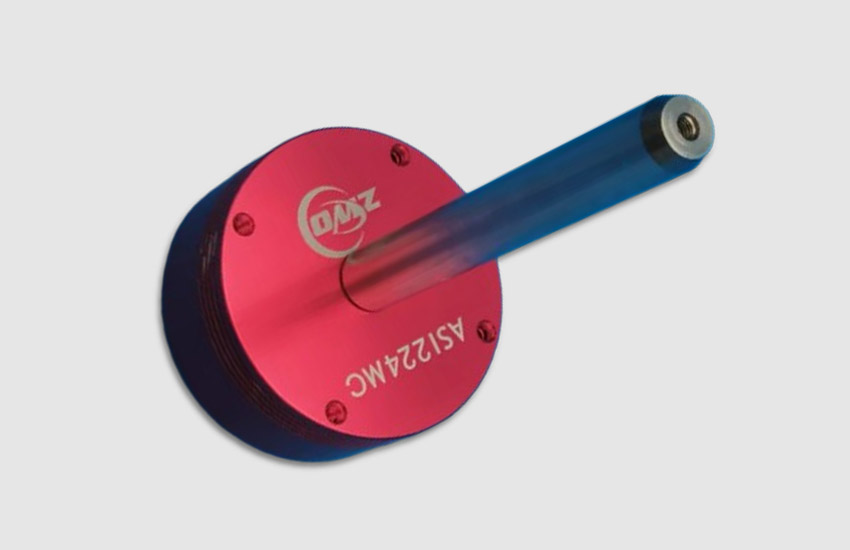Astrophotography enthusiasts, gather ’round! Today, we delve into the intricate world of the ZWO ASI224MC CMOS Color Astronomy Camera, a compact yet powerful camera designed to capture the celestial wonders that adorn our night skies. Whether you’re a seasoned stargazer or a curious beginner, this review aims to demystify the features, strengths, and limitations of this remarkable imaging tool.
Our Top Pick
No products found.
Key Features
Advanced CMOS Sensor Technology
Sony IMX224 Sensor
The ZWO ASI224MC is equipped with the Sony IMX224 sensor, a 1/3″ CMOS sensor that offers high sensitivity and low noise levels. This sensor is particularly well-suited for astrophotography, capturing detailed and clear images of various celestial objects. The IMX224 sensor leverages Sony’s Exmor and NIR Technology, which enhances its performance, especially in the infrared range.
High Sensitivity and Low Noise
One of the standout features of the ASI224MC is its exceptional sensitivity and low noise. With a peak Quantum Efficiency (QE) of around 75-80%, this camera can capture faint details with shorter exposure times, reducing the overall noise in the images. The low read noise of less than 1e further enhances image quality, making it easier to capture high-contrast details.
Resolution and Pixel Size
The camera offers a resolution of 1304 x 976 with a pixel size of 3.75 μm. This combination provides a balance between detail and sensitivity, allowing astrophotographers to capture sharp images with fine details. The small pixel size is particularly beneficial for planetary imaging, where high resolution is essential for capturing surface details of planets.
Connectivity and Compatibility
USB 3.0 Port
The ZWO ASI224MC features a USB 3.0 port, which ensures fast data transfer rates. This capability allows the camera to operate at 64 frames per second (fps) in 12-bit mode and up to 150 fps in 10-bit mode at full resolution. The high-speed data transfer is crucial for capturing rapid sequences of images, which is essential for planetary imaging.
ST4 Guide Port
The inclusion of an ST4 guide port makes the ASI224MC compatible with autoguiding systems. This feature is particularly useful for deep-sky imaging, where precise tracking is necessary for long-exposure shots. The ST4 port allows the camera to connect directly to the autoguider port on a mount, providing seamless integration and improved tracking accuracy.
Design and Build Quality

Compact and Lightweight
The ASI224MC is designed to be compact and lightweight, making it easy to transport and set up. Its small form factor ensures that it can be used with a variety of telescope setups without adding significant weight or requiring extensive modifications.
Durable Construction
Constructed with high-quality materials, the ASI224MC is built to withstand the rigors of regular use. Its robust design ensures that it can handle various environmental conditions, making it a reliable choice for astrophotographers who often set up in remote or outdoor locations.
Performance Analysis
Image Quality
High Dynamic Range and QE
The high dynamic range and quantum efficiency of the ASI224MC result in detailed and clear images. The camera can capture a wide range of light intensities, preserving both the bright and faint details in a single shot. This feature is particularly beneficial for astrophotography, where capturing the subtle details of celestial objects is crucial.
Infrared Sensitivity
The camera’s sensitivity to infrared light extends its capabilities, allowing astrophotographers to capture objects that are less visible in the standard visible spectrum. This feature is useful for observing and imaging certain nebulae and other deep-sky objects that emit strongly in the infrared range.
Usability
Software Compatibility
The ZWO ASI224MC is compatible with a wide range of astrophotography software, including popular programs like SharpCap, FireCapture, and PHD2. This broad compatibility ensures that users can integrate the camera into their existing workflows with ease, leveraging the advanced features of these software tools to enhance their imaging sessions.
User-Friendly Operation
Designed with both beginners and advanced users in mind, the ASI224MC offers a user-friendly operation. The straightforward setup process and intuitive controls make it accessible to newcomers, while the advanced features and performance satisfy the needs of experienced astrophotographers.
Use Cases
Planetary Imaging
Capturing Planets
The ASI224MC excels in planetary imaging, thanks to its high resolution and fast frame rates. By capturing multiple frames per second, astrophotographers can use stacking techniques to combine the best frames, reducing atmospheric distortion and enhancing the final image quality. This approach is particularly effective for capturing detailed features of planets like Jupiter’s Great Red Spot or the rings of Saturn.
Lunar Photography
The camera’s high sensitivity and resolution also make it ideal for lunar photography. The ASI224MC can capture intricate details of the lunar surface, including craters, mountain ranges, and maria. The ability to capture high-speed sequences helps to mitigate the effects of atmospheric turbulence, resulting in sharp and clear images.
Deep-Sky Object Imaging
Long-Exposure Capabilities
While primarily designed for planetary imaging, the ASI224MC is also capable of capturing deep-sky objects. By using long exposures and stacking multiple images, astrophotographers can capture the faint details of galaxies, nebulae, and star clusters. The camera’s low noise levels and high sensitivity make it well-suited for this type of imaging.
Integration with Other Equipment
The ASI224MC can be easily integrated with other astrophotography equipment, such as filters, filter wheels, and off-axis guiders. This flexibility allows users to enhance their imaging capabilities and achieve even better results. For example, using narrowband filters can help isolate specific wavelengths of light, improving the visibility of certain features in deep-sky objects.
Additional Features

Advanced Features
Amp-Glow Reduction Technology
The ASI224MC incorporates amp-glow reduction technology, which is crucial for long-exposure imaging. Amp-glow is a common issue in CMOS sensors that can degrade image quality, particularly during extended exposures. The built-in technology reduces this effect, ensuring cleaner and more consistent images.
Cooling System
Although the ASI224MC is a color camera and typically used for planetary imaging, it benefits from an efficient cooling system that helps manage the sensor’s temperature. Keeping the sensor cool reduces thermal noise, which is essential for achieving high-quality images, especially in longer exposure scenarios.
Accessories and Add-Ons
Included Accessories
The camera comes with several useful accessories, including a USB cable, ST4 guide cable, and adapters. These accessories ensure that users have everything they need to start imaging right away, making the setup process smoother and more efficient.
Optional Add-Ons
There are various optional add-ons available for the ASI224MC, such as different types of filters and filter wheels. These add-ons can enhance the camera’s performance and versatility, allowing users to tailor their setup to specific imaging needs. For example, using a UV/IR cut filter can improve image sharpness and color accuracy.
Maintenance and Best Practices
Regular Maintenance
Cleaning and Storage Tips
To maintain the performance of the ASI224MC, it is important to clean the sensor and optical surfaces regularly. Use a soft, lint-free cloth and appropriate cleaning solutions to remove dust and smudges. When not in use, store the camera in a protective case to prevent damage and exposure to dust and moisture.
Software Updates
Keeping the camera’s software and drivers up to date is essential for optimal performance. Regularly check for updates from ZWO and install them to ensure that the camera functions smoothly and benefits from any improvements or new features.
Troubleshooting Common Issues
Common Problems and Solutions
Like any advanced piece of equipment, the ASI224MC may encounter occasional issues. Common problems include connectivity issues, software glitches, and image artifacts. Refer to the user manual and online forums for troubleshooting tips, and contact ZWO support for assistance if needed. Ensuring that all cables are securely connected and that the software is correctly configured can often resolve most issues.
ZWO ASI224MC CMOS Color Astronomy Camera
Unleash the cosmos with this compact camera, designed for planetary imaging and beyond.
Comparison with Competitors
ZWO ASI224MC vs. ZWO ASI290MC
Sensor Differences
The ZWO ASI224MC and ASI290MC both use CMOS sensors but differ in their specifications. The ASI290MC features a larger sensor and higher resolution, which can be advantageous for certain types of imaging. However, the ASI224MC’s lower noise levels and high sensitivity make it a strong competitor, particularly for planetary imaging.
User Experience
Both cameras offer excellent performance, but the ASI224MC is often preferred for its ease of use and compatibility with a wide range of software. The ASI290MC, with its higher resolution, is favored by those who need more detailed images and are willing to manage the slightly more complex setup.
ZWO ASI224MC vs. SVBONY SV305 Pro
Price vs. Performance
The SVBONY SV305 Pro is a more budget-friendly option, but the ZWO ASI224MC often outperforms it in terms of sensitivity and noise levels. The ASI224MC’s advanced sensor technology and robust build quality justify its higher price point, offering better overall performance for serious astrophotographers.
Feature Set Comparison
While both cameras are capable of high-quality imaging, the ASI224MC’s additional features, such as amp-glow reduction and superior software compatibility, make it a more versatile and reliable choice. The SV305 Pro is a good option for beginners or those on a budget, but the ASI224MC offers more advanced capabilities for serious astrophotographers. Its robust build quality, advanced sensor technology, and extensive accessory options give it an edge over the SV305 Pro.
Conclusion
The ZWO ASI224MC CMOS Color Camera is a versatile camera, excelling in planetary imaging while offering some potential for DSO work. Consider your specific goals and setup when deciding whether it’s the right fit for your astrophotography journey.
Remember, the joy of astrophotography lies not only in the equipment but also in the wonder of the cosmos. Happy imaging!
Frequently Asked Questions (FAQs)
What are the optimal settings for planetary imaging?
For planetary imaging, it’s recommended to use high frame rates, short exposure times, and a gain setting that balances sensitivity with noise. Software such as SharpCap or FireCapture can be used to fine-tune these settings. Stacking multiple exposures using tools like RegiStax or AutoStakkert can further enhance image quality by reducing atmospheric distortion.
Is the ZWO ASI224MC suitable for deep-sky imaging?
While the ASI224MC is primarily designed for planetary imaging, it is also capable of capturing deep-sky objects. By using long exposures and stacking techniques, astrophotographers can capture detailed images of galaxies, nebulae, and star clusters. The camera’s low noise levels and high sensitivity make it well-suited for this type of imaging.
How do I connect the camera to my telescope?
The ASI224MC can be connected to a telescope using standard 1.25″ or 2″ adapters. Ensure that the camera is securely attached and that all connections are tight to avoid any movement during imaging. The USB 3.0 port should be connected to a computer for data transfer, and the ST4 guide port can be connected to an autoguider port on the mount if autoguiding is used.
What software is recommended for this camera?
The ZWO ASI224MC is compatible with a wide range of astrophotography software, including SharpCap, FireCapture, and PHD2. These programs offer features for capturing, processing, and analyzing images, making them essential tools for astrophotographers. ZWO’s own software, ASIStudio, is also a good option for managing and processing images from the ASI224MC.
Can this camera be used for autoguiding?
Yes, the ASI224MC is equipped with an ST4 guide port, making it suitable for autoguiding. It can be connected to an autoguider port on the mount, and software such as PHD2 can be used to manage the guiding process. The camera’s high sensitivity and low noise make it effective for detecting and tracking guide stars.




